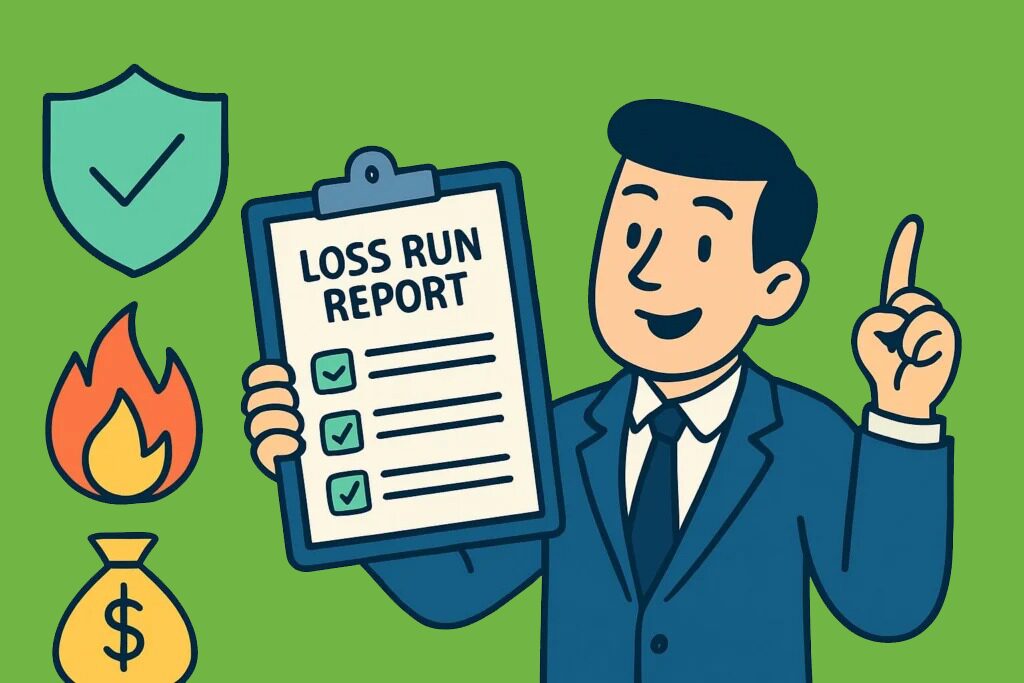Understanding the Importance of a Loss Run Report

Insurance professionals frequently express frustration when navigating loss run reports, dealing with delays, unclear data, and the challenge of clearly conveying essential loss history to stakeholders. Executives and account managers, especially those who train new employees, understand that overlooked details in these reports significantly impact coverage decisions, premium calculations, and overall risk management for business insurance, including Business Owner’s Policies.
A loss run report is essentially a detailed history of insurance loss reported against an insurance policy, containing key data such as dates, types, and financial impacts of losses. These reports inform insurance underwriters and agents about potential risks associated with insuring a client, directly influencing insurance premiums and policy terms. But what is a loss run report in insurance, exactly? It’s a crucial tool for risk evaluation and determining suitable insurance coverage.
Insurance agencies rely heavily on accurate loss run reports for underwriting and policy renewal discussions. Timely, comprehensive reports facilitate accurate premium calculations and informed risk assessments. Loss runs for insurance provide a clear view of an insured’s claims history, enabling precise risk evaluation.
Yet, insurance professionals often feel overwhelmed by inconsistent or unclear data within insurance loss runs. Balancing multiple responsibilities, they can struggle to efficiently analyze loss reports. Streamlining this process drastically improves outcomes and reduces stress.
Why Loss Runs Matter for Insurance Agencies

Loss run insurance reports significantly affect underwriting decisions, insurance pricing, and risk assessments. Clear, organized reports build trust with underwriters, whereas incomplete or confusing reports may lead to miscalculations, missed quotes, or outright coverage denials.
The real-world implications of understanding what are loss runs in insurance are substantial:
- Risk Classification: Accurately classifying clients into appropriate risk categories based on verified business insurance claims history rather than assumptions.
- Coverage Structuring: Designing insurance policy frameworks with limits, deductibles, and exclusions tailored specifically to demonstrated loss exposures.
- Premium Justification: Supporting rate calculations with concrete, understandable data for clients.
Presented clearly and organized, loss run report insurance builds credibility with insurance underwriters, facilitating favorable terms and smoother placement processes. Conversely, incomplete or disorganized reports can trigger additional scrutiny, quoting delays, or outright rejections.
Financial Impact Measurement
Financial implications from loss run reporting extend beyond basic premium calculations:
- Premium Differentials: Thoroughly analyzed, well-presented loss history may result in premium differences of 15-30% between otherwise identical risks.
- Retention Decisions: Insurance carriers base critical retention decisions largely on loss trends identified in these reports.
- Dividend Eligibility: For participating policies, loss performance directly impacts potential dividend returns.
- Experience Modification Calculations: Workers’ compensation experience modifications depend on loss data, where even one miscoded claim can affect rates for up to three years.
Client Relationship Enhancement
Loss runs offer unique opportunities to strengthen client relationships through:
- Consultative Value: Demonstrating expertise by highlighting previously unnoticed loss patterns (e.g., all slip-and-fall claims occur in a single location).
- Risk Management Partnerships: Using claim details to suggest targeted loss prevention strategies with measurable ROI.
- Renewal Preparation: Proactively addressing problematic claims 90-120 days before renewal to potentially close files and enhance the risk profile.
- Transparency Building: Educating clients about their past claims history fosters trust and prevents renewal surprises
How to Request Loss Runs (Without the Headache)

Requesting loss run reports doesn’t have to be complicated. Follow these practical steps to understand how to get loss run report:
Strategic Preparation
Before initiating requests, gather these essentials:
- Client’s signed authorization letter (dated within 30 days).
- Complete policy numbers for all coverage lines, including general liability.
- Exact legal entity names, including all DBAs.
- Specific date range needed (typically a 3 year loss run report).
Direct Request Methods
- Insurance Company Portal: Many insurance providers offer self-service download options through agent portals (fastest method).
- Incumbent Agent: For new business, directly contact the current agent with authorization.
- Underwriter: Utilize underwriter relationships for expedited requests.
- Claims Department: Directly contact them for complex or older loss histories.
Timeline Management
- Request 45-60 days before renewal for existing business.
- Allow 5-10 business days for standard processing.
- Follow up after 3 business days if urgent or confirmation isn’t received.
- Document all request dates and contacts for client transparency.
How to Read a Loss Run Report
Effectively reading a loss report involves understanding these key elements:
- Policy Period: Coverage timeframe.
- Date of Loss: Timing of claim occurrence.
- Type of Claim: Nature of the loss (e.g., property damage, liability).
- Amount Paid: Actual payout to date.
- Amount Reserved: Estimated future costs or reserve funds.
- Status: Open claims or closed claims, impacting risk perception.
Expert Tip: Use reports to identify trends—multiple similar claims might signify recurring risks needing immediate attention. For instance, repeated theft claims highlight the necessity of improved security measures. Pay attention to claim frequency and claim severity, as these factors greatly influence insurance pricing.
Communicating Insights from Loss Runs to Clients and Stakeholders
Effectively communicating loss run insights involves clear, jargon-free explanations. Present visual summaries to simplify complex data and reinforce client confidence.
Use historical claims activity constructively to advise clients on preventative measures:
“Given your three recent thefts, implementing enhanced security systems could lower future risks and potentially reduce your insurance premiums.”
Being proactive and transparent about loss histories builds trust with clients and insurance carriers. Clearly communicating risks and recommended solutions reassures stakeholders of your competence and dedication to their best interests.
Step-by-Step Framework for Training New Hires on Loss Run Reports

Effective training on loss run statements starts foundationally and progresses:
Day 1: Foundation
Learn: Loss run basics, carrier formats, key terminology.
Practice: Identify critical data points across reports.
Verify: Speed test for element identification.
Day 2: Analysis
Learn: Review methodologies, calculations, pattern recognition.
Practice: Identify claim trends and errors in sample reports.
Verify: Error-detection exercise with intentionally planted issues
Day 3: Communication
Learn: Client-friendly explanations, visual data presentation.
Practice: Translate technical findings into actionable insights.
Verify: 5-minute loss analysis presentation.
Utilizing interactive training solutions like Total CSR’s in-depth insurance agent training significantly simplifies onboarding, ensuring consistent, high-quality training.
Conclusion
Mastering loss run reports allows insurance professionals to manage risk effectively, accurately calculate premiums, and communicate clearly with stakeholders. Understanding what is loss runs in insurance and interpreting them accurately is essential for success in the insurance industry. Equipped with this comprehensive guide, your agency is well-positioned to request, analyze, and leverage loss run reports effectively, enhancing both team performance and client satisfaction.
Total CSR provides far more than designations. The platform includes:
- Thorough training for new hires
- Focused skill-building for account managers
- Advanced education tailored to agency requirements, covering business auto policy and commercial property
- Specialized courses on ethics, customer service, and risk management
Ready to see what Total CSR can do for your agency and its ethical responsibility? Book a Customized Demo today to discover how Total CSR can help your agency thrive in the insurance industry.

